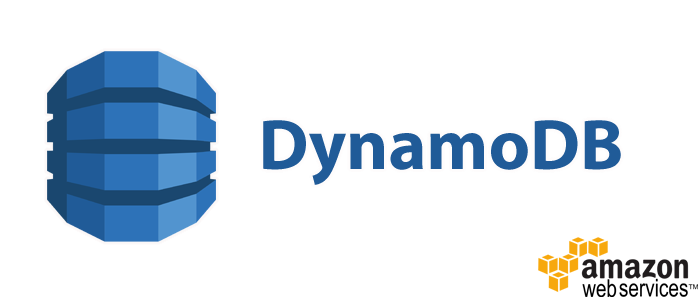Introduction to DynamoDB Shell
Introduction to DynamoDB Shell

Amazon DynamoDB is a Serverless, key-value No-SQL database that is fully managed by AWS. Recently, AWS announced the release of ddbsh, a command line interface that was inspired by similar projects like MySQL CLIs. With ddbsh, users can easily input SQL-like commands that will be automatically translated to DynamoDB queries. This new tool offers a simple command line interface and supports a wide range of Data Definition Language (DDL) and Data Manipulation Language (DML) commands, making it a versatile and useful addition to DynamoDB’s ecosystem.
In order to use the new CLI, we need to follow a few steps. Cmake is required for building the project, if you don’t have it, get it here.
We need to build AWS C++ SDK from the source code, ddbsh make process requires this step.
// clone the aws sdk cpp repo
git clone https://github.com/aws/aws-sdk-cpp.git
// create a directory for the build
mkdir aws-sdk-build
// change directory to the source repo
cd aws-sdk-cpp
// update submodules recursively
git submodule update --init --recursive
// change directory to the build folder
cd ../aws-sdk-build
// Generate make file via cmake
cmake ../aws-sdk-cpp -DCMAKE_BUILD_TYPE=Release \
-DCMAKE_PREFIX_PATH=/usr/local/ \
-DCMAKE_INSTALL_PREFIX=/usr/local/ \
-DBUILD_ONLY="dynamodb" \
-DBUILD_SHARED_LIBS=OFF \
-DENABLE_TESTING=OFF \
-DFORCE_SHARED_CRT=OFF
// make
make
// install
sudo make installNow we can build the ddbsh from the source code
// clone the repo
git clone https://github.com/awslabs/dynamodb-shell.git
// change directory to the source repo
cd dynamodb-shell
// make directory
mkdir build
// change directory to the new folder
cd build
// Generate make file via cmake
cmake ../ddbsh -DCMAKE_BUILD_TYPE=Release
// make
make
// install
sudo make installNow the installation has been completed, we can start executing commands.
$ ./ddbsh
us-east-1>
// ddbsh will use the default region specificed in the global config file
$ us-east-1> connect us-west-2;
CONNECT
us-west-2>We’ve successfully connected and changed the region. We can create a new table and add some records.
Before we create anything let’s explore the explain command, which will show the underlying commands that will be executed;
$ explain create table dogs ( id string, name string ) primary key ( id hash ) billing mode provisioned ( 5 rcu, 5 wcu ) gsi ( namegsi on (name hash) projecting all billing mode provisioned ( 5 rcu, 5 wcu ));
CreateTable({
"AttributeDefinitions": [{
"AttributeName": "id",
"AttributeType": "S"
}, {
"AttributeName": "name",
"AttributeType": "S"
}],
"TableName": "dogs",
"KeySchema": [{
"AttributeName": "id",
"KeyType": "HASH"
}],
"GlobalSecondaryIndexes": [{
"IndexName": "namegsi",
"KeySchema": [{
"AttributeName": "name",
"KeyType": "HASH"
}],
"Projection": {
"ProjectionType": "ALL"
},
"ProvisionedThroughput": {
"ReadCapacityUnits": 5,
"WriteCapacityUnits": 5
}
}],
"BillingMode": "PROVISIONED",
"ProvisionedThroughput": {
"ReadCapacityUnits": 5,
"WriteCapacityUnits": 5
},
"TableClass": "STANDARD"
})Let’s create the table
$ create table dogs ( id string, name string ) primary key ( id hash ) billing mode provisioned ( 5 rcu, 5 wcu ) gsi ( namegsi on (name hash) projecting all billing mode provisioned ( 5 rcu, 5 wcu ));
CREATE
We can list the existing tables via the show command.
$ show tables
dogs | ACTIVE | PROVISIONED | STANDARD | f7b0baf5-3669-4283-ba32-cef7c5861b7e | arn:aws:dynamodb:us-west-2:275035559758:table/dogs | TTL DISABLED | GSI: 1 | LSI : 0Now that the table has been created, let’s add some records.
$ insert into dogs ( id, name, age, breed, weight, weightType, gender)
values ( "bWOP", "Max", 5, "German Shepherd", 130, "lbs", "male" ),
( "hTwZ", "Chop", 2, "Rottweiler", 150, "lbs", "male" ),
( "VXZq", "Luna", 8, "Mixed Breed", 60, "lbs", "female" ),
( "rvXp", "Brutus", 10, "St. Bernard", 200, "lbs", "male" ),
( "ry2e", "Riley", 15, "Mixed Breed", 90, "lbs", "female");
INSERT
INSERT
INSERT
INSERT
INSERTWe can play around with the data now.
$ select * from dogs;
{age: 10, breed: "St. Bernard", gender: male, id: rvXp, name: Brutus, weight: 200, weightType: lbs}
{age: 5, breed: "German Shepherd", gender: male, id: bWOP, name: Max, weight: 130, weightType: lbs}
{age: 15, breed: "Mixed Breed", gender: female, id: ry2e, name: Riley, weight: 90, weightType: lbs}
{age: 2, breed: Rottweiler, gender: male, id: hTwZ, name: Chop, weight: 150, weightType: lbs}
{age: 8, breed: "Mixed Breed", gender: female, id: VXZq, name: Luna, weight: 60, weightType: lbs}
$ select * from dogs where gender = "male";
{age: 10, breed: "St. Bernard", gender: male, id: rvXp, name: Brutus, weight: 200, weightType: lbs}
{age: 5, breed: "German Shepherd", gender: male, id: bWOP, name: Max, weight: 130, weightType: lbs}
{age: 2, breed: Rottweiler, gender: male, id: hTwZ, name: Chop, weight: 150, weightType: lbs}
$ select * from dogs where age > 8;
{age: 10, breed: "St. Bernard", gender: male, id: rvXp, name: Brutus, weight: 200, weightType: lbs}
{age: 15, breed: "Mixed Breed", gender: female, id: ry2e, name: Riley, weight: 90, weightType: lbs}We can specify to use Global Secondary Index(GSI) we’ve added during the table creation.
$ select * from dogs.namegsi where name = "Brutus";
{age: 10, breed: "St. Bernard", gender: male, id: rvXp, name: Brutus, weight: 200, weightType: lbs}Let’s update a record.
$ update dogsset age= 11 where name = "Brutus";
UPDATEDelete a record.
$ delete from dogs where name = "Brutus";
DELETEFor further information and, please refer to project’s Github page. https://github.com/awslabs/dynamodb-shell/blob/main/README.md
Once you are done with this tutorial, don’t forget to delete the table we’ve created.
$ drop table dogs;
DROP
// nothing will show as we don't have any tables left
$ show tables;Overall, ddsh offers excellent tooling for working with DynamoDB, enabling developers to interact with the database directly from their command lines. However, it is not yet recommended for use in production environments. We eagerly anticipate future updates from AWS to further improvements.
Are you ready to enhance your AWS Cloud journey? Head over to our website and book a free consultation call.
